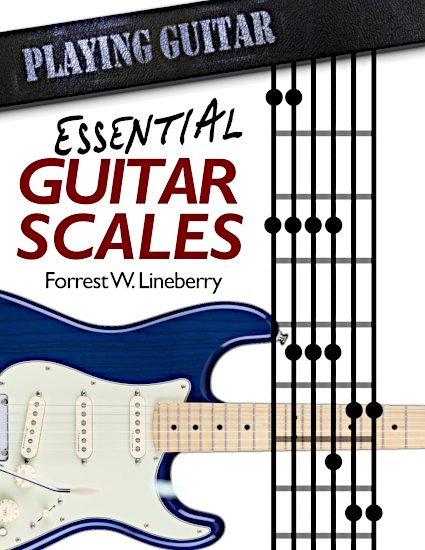Conclusion
There are other approaches to chords scales and arpeggios on the fretboard such as 4-notes per-string major scale fingerings and 3-notes-per-string pentatonic fingerings. For players learning to sweep pick arpeggios there are specialized note arrangements that facilitate that type of playing.
So, which system should you choose?
CAGED and 3nps run neck and neck as the pattern system of choice for most players. Both systems have true believers and zealous detractors who have engaged in internet wars defending their preferred system while slandering the other system and any players who use it.. Seen from a purely organizational viewpoint, there’s no way around the CAGED and CAGED+ chords lining up on the fretboard. That’s just how triads lay out on the neck. Even if you don’t want to call it CAGED, it’s still the same five or seven chord shapes at the same locations. Any work you do with chords necessitates you interacting wit CAGED. As for scale and arpeggio shapes, this comes down to player preference. Some players prefer to play off of the chord shapes. These players inevitably gravitate to the caged patterns. Other players are more attracted to the geometrical nature of working strictly with string shapes. These players inevitably gravitate to 3nps scale patterns and sweep picking shapes for arpeggios..
The CAGED+ system has elements of both CAGED and 3nps. Like caged, it’s firmly rooted on chord shapes and the pentatonic patterns. Two of the scale shapes (2-E, 4-A) are identical to CAGED shapes (E and C shapes). The remaining five shapes have more in common with the 3nps shapes. Transitioning from CAGED+ patterns to 3nps patterns is relatively easy.
Position playing is presented here just to make you aware of the fingering possibilities and to drive home the point that you don’t have to jump around to different locations on the fretboard. to play the notes you need. Unless you imagine yourself becoming an on-call session guitarist required to play from sheet music at a moments notice, however, strict position playing may require too much time and attention to make it worth the effort of learning..
An important thing to understand in all of this is that there is no reason to think that you have to choose only one approach and stick with it through thick and thin. You’re free to learn more than one system and switch between them as playing circumstances dictate. You’re free to pick and choose elements from each system to create your own system. You’re free to not bother learning any system at all. Your ultimate goal as a guitar player should be reaching the point of being able to visualize any chord scale or arpeggio covering the entire fretboard. The true value of learning a system is that somebody else has already done a lot of the work for you. This gets you playing music sooner than having to take the time to figure this stuff out for yourself.
What to Practice
On Paper
Open the PDF linked, below, and print out a billion copies:
Keep some of these with you at home, school, work, or anywhere you might be hanging out. Any time you find yourself with nothing to do, grab a sheet and plot out some chords, scales and arpeggios. Doing this will help you visualize these shapes on the fretboard. Pay particular attention to following the correct key signature for each pattern you plot.
Start with plotting the CAGED chords from every root note.
Get to know how each chord has notes that overlap with notes from the chord above and below in the sequence.
Pay attention to how the CAGED sequence loops at the C chord.
Pay attention to how the entire sequence moves up or down the fretboard when you change the root note.
Look for the three-string inversion shapes stacked in each chord.
Convert each chord to minor, diminished and augmented
Plot out the major arpeggios from every root note. Convert each arpeggio to minor, diminished and augmented.
Plot out the pentatonic scale shapes. Fill in the missing notes for the major scale.
On the Guitar
All the plotting you’ve done on paper needs to be transferred, via your eyes, ears and fingers, to the guitar fretboard.
Work out the location of the CAGED chords.
For each position, play the chord, arpeggio, pentatonic and major scale.
Do this from every root note, back-cycling around the circle of 5ths (C — F — B♭ — E♭ — A♭ — D♭ — G♭ — B — E — A — D — G)
For each position work out at least one way to finger the minor, diminished and augmented chords.
Play each chord type followed by the appropriate arpeggio.
We haven’t explored minor, diminished or augmented scales, yet, but when we do, you’ll add those fingerings to the above practice.

Book Title
Essential Guitar Scales
The scales you need, how to learn them, how to practice them, how to USE them.
Sell Link
Coming in early 2020!
Sample Chapter Links
Sample Chapters

